Nationality American Spouse Larry Mann Known for Photography | Role Photographer Name Sally Mann | |
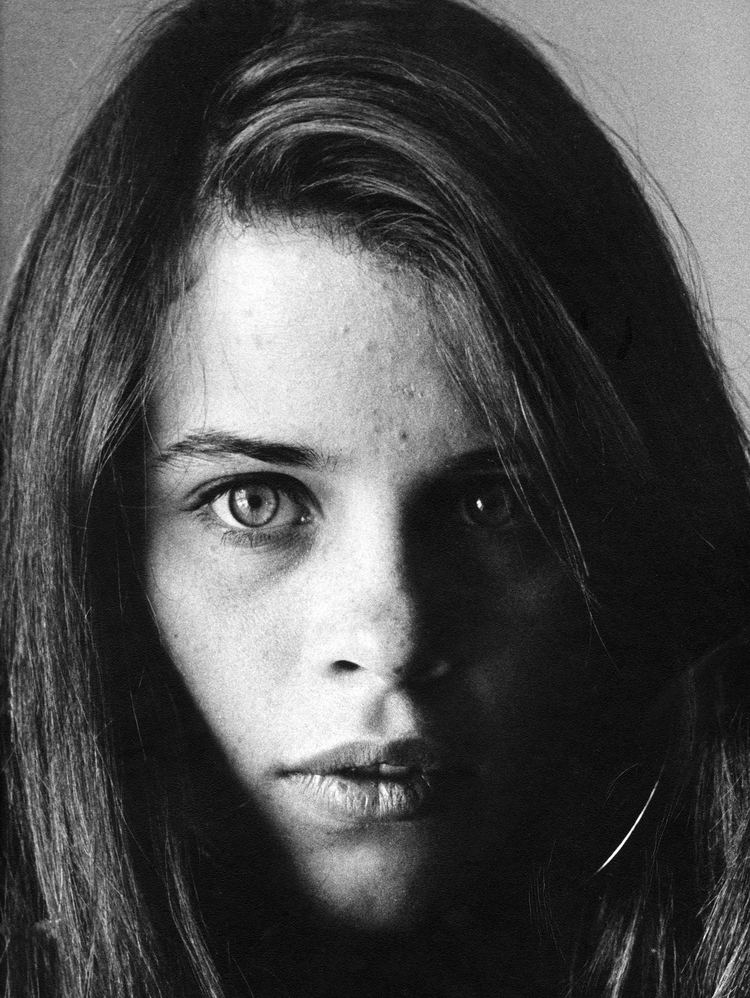 | ||
Full Name Sally Turner Munger Awards • National Endowment for the Arts Individual Artist Fellowship: 1982, 1988, & 1992.• John Simon Guggenheim Memorial Foundation Fellowship, 1987.• Honorary Doctor of Fine Arts from the Corcoran College of Art and Design, 2006.• Honorary Fellowship of The Royal Photographic Society, 2012 Children Jessie Mann, Emmett Mann, Virginia Mann Parents Robert S. Munger, Elizabeth Evans Munger Books Hold Still: A Memoir with Phot, Immediate Family, At Twelve: Portraits of Young W, What Remains, Still Time Similar People Jock Sturges, Jessie Mann, David Hamilton, Diane Arbus, Cindy Sherman | ||
Sally mann battlefields photography
Sally Mann (born 1951) is an American photographer, best known for her large-format, black-and-white photographs—at first of her young children, then later of landscapes suggesting decay and death.
Contents
- Sally mann battlefields photography
- Sally mann faces photography
- Early life and education
- Early career
- At Twelve Portraits of Young Women
- Immediate Family and controversy
- Later career
- Personal life
- Recognition
- Grants and honors
- Publications
- Film television and radio
- References

Sally mann faces photography
Early life and education
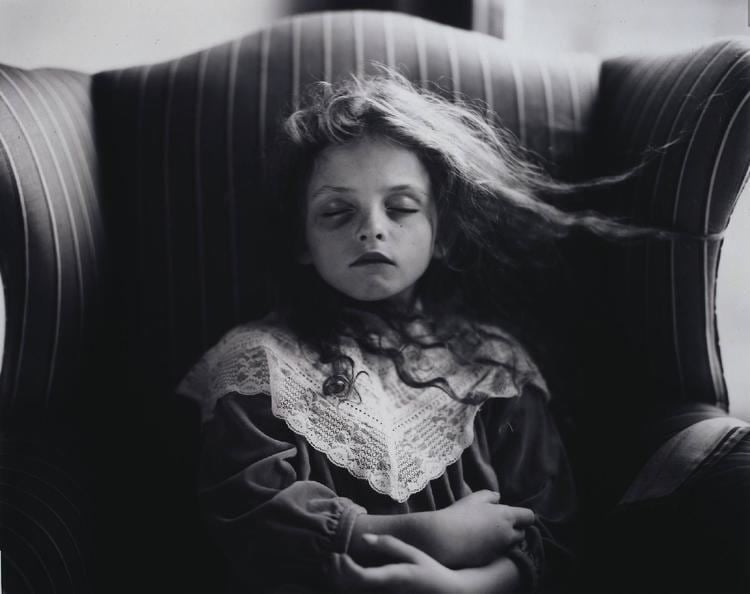
Born in Lexington, Virginia, Mann was the third of three children and the only daughter. Her father, Robert S. Munger, was a general practitioner, and her mother, Elizabeth Evans Munger, ran the bookstore at Washington and Lee University in Lexington. Mann was raised by an atheist and compassionate father who allowed Mann to be "benignly neglected." Mann was introduced to photography by her father, Robert Munger. Munger was a physician who photographed Mann nude as a little girl. Her father encouraged her interest in photography; his 5x7 camera became the basis of her use of large format cameras today. Mann began to photograph when she was sixteen. Most of her photographs and writings are tied to Lexington, Virginia. Mann graduated from The Putney School in 1969, and attended Bennington College and Friends World College. She earned a B.A., summa cum laude, from Hollins College (now Hollins University) in 1974 and a MA in creative writing in 1975. She took up photography at Putney where, she claims, her motive was to be alone in the darkroom with her boyfriend. She made her photographic debut at Putney with an image of a nude classmate. Mann has never had any formal training in photography and she "never read[s] about photography".
Early career

After graduation from Hollins College, Mann worked as a photographer at Washington and Lee University. In the mid-1970s she photographed the construction of its new law school building, the Lewis Hall (now the Sydney Lewis Hall), leading to her first one-woman exhibition in late 1977 at the Corcoran Gallery of Art in Washington, D.C. The Corcoran Gallery of Art published a catalogue of Mann's images titled "The Lewis Law Portfolio". Some of those surrealistic images were also included as part of her first book, Second Sight, published in 1984. While Mann explored a variety of genres as she was maturing in the 1970s, she truly found her trade with her book, At Twelve: Portraits of Young Women (Aperture, 1988).
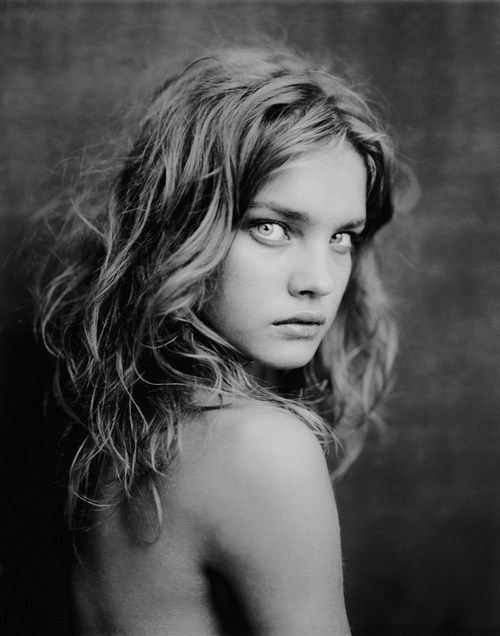
In 1995, she was featured in an issue of "Aperture." On Location with: Henri Cartier-Bresson, Graciela Iturbide, Barbara Kruger, Sally Mann, Andres Serrano, Clarissa Sligh" which was illustrated with photographs.
At Twelve: Portraits of Young Women
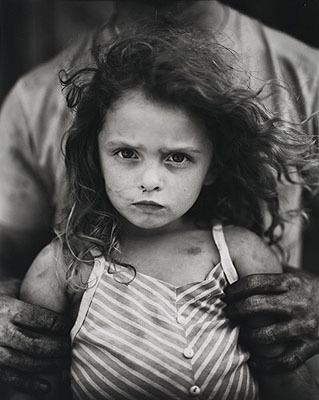
Her second collection, At Twelve: Portraits of Young Women, published in 1988, stimulated minor controversy. The images “captured the confusing emotions and developing identities of adolescent girls [and the] expressive printing style lent a dramatic and brooding mood to all of her images.” In the preface to the book, Ann Beattie says “when a girl is twelve years old, she often wants – or says she wants – less involvement with adults. […] [it is] a Time in which the girls yearn for freedom and adults feel their own grip on things becoming a little tenuous, as they realize that they have to let their children go.” Beattie says that Mann’s photographs don’t “glamorize the world, but they don’t make it into something more unpleasant than it is, either.” The girls photographed in this series are shown “vulnerable in their youthfulness” but Mann instead focuses on the strength that the girls possess.

In one image from the book (shown to the right), Mann says that the young girl was extremely reluctant to stand closer to her mother’s boyfriend. Mann said that she thought it was strange because “it was their peculiar familiarity that had provoked this photograph in the first place.” Mann didn’t want to crop out the girl’s elbow but the girl refused to move in closer. According to Mann, the girl’s mother shot her boyfriend in the face with a .22 several months later. In court the mother “testified that while she worked nights at a local truck stop he was ‘at home partying and harassing my daughter.’” Mann said “the child put it to me somewhat more directly.” Mann says that she now looks at this photograph with “a jaggy chill of realization.”
Immediate Family and controversy
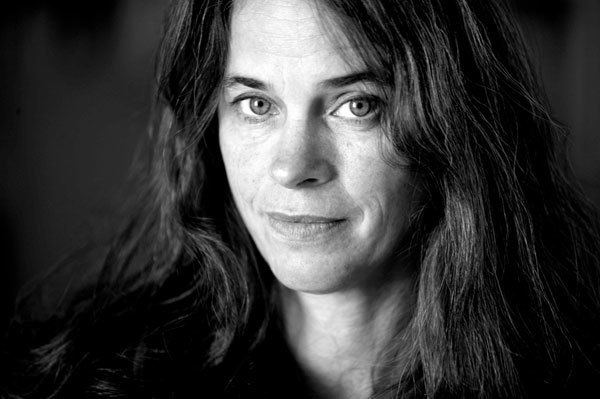
Mann is perhaps best known for Immediate Family, her third collection, first exhibited in 1990 by Edwynn Houk Gallery in Chicago and published as a monograph in 1992. The New York Times said, “Probably no photographer in history has enjoyed such a burst of success in the art world.” The book consists of 65 black-and-white photographs of her three children, all under the age of 10. Many of the pictures were taken at the family's remote summer cabin along the river, where the children played and swam in the nude. Many explore typical childhood themes (skinny dipping, reading the funnies, dressing up, vamping, napping, playing board games) but others touch on darker themes such as insecurity, loneliness, injury, sexuality and death. The controversy on its release was intense, including accusations of child pornography (both in America and abroad) and of contrived fiction with constructed tableaux.

Negative criticism of Mann's works is not hard to find. One of her detractors, Pat Robertson of the Christian Broadcasting Network, has said that “selling photographs of children in their nakedness for profit is an exploitation of the parental role and I think it’s wrong.” He views such work as a violation of the responsibility of parents to do everything in their power to protect, shelter, and nurture their children. More negative criticism came from Raymond Sokolov’s article Critique: Censoring Virginia in the Wall Street Journal. He questioned whether children should be photographed nude and whether federal funds should be appropriated for such artworks. Accompanying his article was a modified image by Mann of her daughter Virginia (Virginia at 4), in which her eyes, nipples, and pubic region were now covered with black bars. Mann said he used the image without permission “to illustrate that this is the kind of thing that shouldn’t be shown.” She was devastated and insulted that someone could mutilate her photograph that way. Virginia was also upset about the article. She wrote a letter to the author saying “Dear Sir, I don’t like the way you crossed me out.” Mann said that after Virginia saw the article, she started touching herself on the areas that were blacked out, saying, “what’s wrong with me?” It was somewhat difficult for Mann to understand the harsh criticism of these photographs, for she did not stage these moments — instead when she saw a photo opportunity unfolding, she simply asked her children stop moving until she could capture it. When Mann was young, she was often nude, so she raised her children similarly.
Many of her other photographs containing her nude or hurt children caused controversy. For example, in "The Perfect Tomato," the viewer sees a nude Jessie, posing on a picnic table outside, bathed in light. Jessie told Steven Cantor during the filming of one of his movies that she had just been playing around and her mother told her to freeze, and she tried to capture the image in a rush because the sun was setting. This explains why everything is blurred except for the tomato, hence the photograph's title. This image was likely criticized for Jessie’s nudity and presentation of the adolescent female form. While Jessie was aware of this photograph, Dana Cox, in her essay, said that the Mann children were probably unaware of the other photographs being taken as Mann’s children were often naked because “it came natural to them.” This habit of nudity is a family thing because Mann says she used to walk around her house naked when she was growing up. Cox states that “the own artist’s childhood is reflected in the way she captures moments in her children’s lives.” One image that deals more with another aspect of childhood besides "naked play", Jessie's Cut, shows Jessie's head, wrapped in what appears to be plastic, with blood running down the side of her face from the cut above her left eye. The cut is stitched and the blood is dry and stains her skin. As painful as the image looks, there are a great number of viewers who could relate to Jessie when they think about the broken bones and stitched up cuts they had during childhood.
Mann herself considered these photographs to be “natural through the eyes of a mother, since she has seen her children in every state: happy, sad, playful, sick, bloodied, angry and even naked.” Critics agreed, saying her “vision in large measure [is] accurate, and a welcome corrective to familiar notions of youth as a time of unalloyed sweetness and innocence,” and that the book “created a place that looked like Eden, then cast upon it the subdued and shifting light of nostalgia, sexuality and death." When Time magazine named her “America’s Best Photographer” in 2001, it wrote:
Mann recorded a combination of spontaneous and carefully arranged moments of childhood repose and revealingly — sometimes unnervingly — imaginative play. What the outraged critics of her child nudes failed to grant was the patent devotion involved throughout the project and the delighted complicity of her son and daughters in so many of the solemn or playful events. No other collection of family photographs is remotely like it, in both its naked candor and the fervor of its maternal curiosity and care.
The New Republic considered it "one of the great photograph books of our time."
Despite all of the controversy, Mann was never charged with the taking or selling of child pornography, even though, according to Edward de Grazia, law professor and civil liberties expert, “any federal prosecutor anywhere in the country could bring a case against [Mann] in Virginia, and not only seize her photos, her equipment, her Rolodexes, but also seize her children for psychiatric and physical examination.” Mann always put her children's well-being first. Before she published Immediate Family, she consulted a Virginian Federal prosecutor who told her that some of the images she was exhibiting could have her arrested. She decided to postpone the publication of the book in 1991. In an interview with New York Times reporter, Richard Woodward, she said “I thought the book could wait 10 years, when the kids won’t be living in the same bodies. They’ll have matured and they’ll understand the implications of the pictures. I unilaterally decided.” The children apparently did not like this decision and Mann and her husband arranged for Emmett and Jessie to talk to a psychologist to be sure their feelings were honest and so that they understood what the publication would do. Each child was then allowed to vote on which photographs were to be put in the book. To further protect the children from “teasing,” Mann told Woodward that she wanted to keep copies of Immediate Family out of their home town of Lexington. She asked bookstores in the area not to sell it and for libraries to keep it in their rare-book rooms. Dr. Aaron Esman, a child psychiatrist at the Payne Whitney Clinic believes that Mann is serious about her work and that she has “no intention to jeopardize her children or use them for pornographic images.” He says that the nude photographs don’t appear to be erotically stimulating to anyone but a “case-hardened pedophile or a rather dogmatic religious fundamentalist.” Mann states, "I didn't expect the controversy over the pictures of my children. I was just a mother photographing her children as they were growing up. I was exploring different subjects with them."
Her fourth book, Still Time, published in 1994, was based on the catalogue of a traveling exhibition that included more than 20 years of her photography. The 60 images included more photographs of her children, but also earlier landscapes with color and abstract photographs.
Later career
In the mid-1990s, Mann began photographing landscapes on wet plate collodion 8x10 inch glass negatives, and used the same 100 year-old 8x10 format bellows view camera that she had used for all the previous bodies of work. These landscapes were first seen in Still Time, and later featured in two shows presented by the Edwynn Houk Gallery in NYC: Sally Mann – Mother Land: Recent Landscapes of Georgia and Virginia in 1997, and then in Deep South: Landscapes of Louisiana and Mississippi in 1999. Many of these large (40"x50") black-and-white and manipulated prints were taken using the 19th century “wet plate” process, or collodion, in which glass plates are coated with collodion, dipped in silver nitrate, and exposed while still wet. This gave the photographs what the New York Times called “a swirling, ethereal image with a center of preternatural clarity," and showed many flaws and artifacts, some from the process and some introduced by Mann.
Mann uses antique view cameras from the early 1890s. These cameras have wooden frames, accordion-like bellows and long lenses made out of brass held together by tape that has mold growing inside. This sort of camera softens the light which makes the pictures timeless.
Mann’s fifth book, What Remains, published in 2003, is based on the show of the same name at the Corcoran Gallery in Washington, D.C. The book is broken up into four sections: Matter Lent, December 8, 2000, Antietam, and What Remains. The first section contains photographs of the remains of Eva, her greyhound, after decomposition, along with the photographs of dead and decomposing bodies at a federal forensic anthropology facility (known as the ‘body farm’). The second part details the site on her property where an armed escaped convict was killed. The third part is a study of the grounds of Antietam, the site of the bloodiest single day battle in American history during the Civil War. The fourth part is a study of close-up faces of her children. Thus, this study of mortality, decay and death ends with hope and love.
Mann’s sixth book, Deep South, published in 2005, with 65 black-and-white images, includes landscapes taken from 1992 to 2004 using both conventional 8x10 film and wet plate collodion. These photographs have been described as “haunted landscapes of the south, battlefields, decaying mansion, kudzu shrouded landscapes and the site where Emmett Till was murdered." Newsweek picked it as their book choice for the holiday season, saying that Mann “walks right up to every Southern stereotype in the book and subtly demolishes each in its turn by creating indelibly disturbing images that hover somewhere between document and dream."
Mann's seventh book, Proud Flesh, published in 2009, is a study taken over six years of the effects of muscular dystrophy on her husband Larry Mann. Mann photographed her husband using a cumbersome process that dates back to the 1850s. A collodion wet plate, creating a large formatted negative image on film not glass. As she notes, "The results of this rare reversal of photographic roles are candid, extraordinarily wrenching and touchingly frank portraits of a man at his most vulnerable moment." The project was displayed in Gagosian Gallery in October 2009.
Mann's eighth book, The Flesh and The Spirit, published in 2010, was released in conjunction with a comprehensive show at the Virginia Museum of Fine Arts in Richmond, Virginia. Regarding this exhibition, Virginia's Museum director states, "She follows her own voice. Her pictures are imbued with an amazing degree of soul." Though not a retrospective, this 200 page book includes new and recent work (unpublished self-portraits, landscapes, images of her husband, her children's faces, and of the dead at a forensic institute) as well as early works (unpublished color photographs of her children in the 1990s, color Polaroids and platinum prints from the 1970s). Its unifying theme is the body, with its vagaries of illnesses and death, and includes essays by John Ravenal, David Levi Strauss and Anne Wilkes Tucker.
In May 2011 she delivered the three-day Massey Lecture Series at Harvard. In June 2011, Mann sat down with one of her contemporaries, Nan Goldin, at Look3 Charlottesville Festival of the Photograph. The two photographers discussed their respective careers, particularly the ways in which photographing personal lives became a source of professional controversy. This was followed by an appearance at the University of Michigan as part of the Penny W. Stamps lecture series.
Mann's ninth book, Hold Still: A Memoir with Photographs, released May 12, 2015, is a melding of a memoir of her youth, an examination of some major influences of her life, and reflections on how photography shapes our view of the world. It is augmented with photographs, letters, and other memorabilia. She singles out her "near-feral" childhood and her subsequent introduction to photography at Putney, her relationship to her husband of 40 years and his parent's mysterious death, and her maternal Welsh relative's nostalgia for land morphing into her love for her land in the Shenandoah Valley as some of her important influences. Gee-Gee, a black woman who was a surrogate parent, who opened Mann's eyes to race relations and exploitation, her relationship with Cy Twombly, and her father's genteel southern legacy and his eventual death are also examined. The New York Times describes it as "an instant classic among Southern memoirs of the last 50 years." An article by Mann adapted from this book appeared with photographs in The New York Times Magazine in April 2015. Hold Still was a finalist for the 2015 National Book Award.
Mann's tenth book, Remembered Light: Cy Twombly in Lexington was published in 2016. It is an insider's photographic view of Cy Twombly's studio in Lexington. It was published concurrently with an exhibit of color and black-and-white photographs at the Gagosian Gallery. It shows the overflow of Twombly's general modus operandi—the leftovers, smears, and stains, or, as Simon Schama said in his essay at the start of the book, "an absence turned into a presence."
Her current projects include a series of portraits of black men and the legacies of slavery. Mann was inspired by Bill T. Jones' use of the Walt Whitman 1856 poem "Poem of the Body" in his art, and Mann "borrowed the idea, using the poem as a template for [her] own exploration." Several pictures from of this body work were highlighted in Aperture Foundation magazine in the summer of 2016.
Personal life
Mann, born and raised in Virginia, was the daughter of Robert Munger and Elizabeth Munger. In Mann’s introduction for her book "Immediate Family", she "expresses stronger memories for the black woman, Virginia Carter, who oversaw her upbringing than for her own mother." Elizabeth Munger was not a big part of Mann's life, and Elizabeth said “Sally may look like me, but inside she’s her father’s child.” Virginia (Gee-Gee) Carter, born in 1894, raised Mann and her two brothers and was an admirable woman. “Left with six children and a public education system for which she paid taxes but which forbade classes for black children beyond the seventh grade, Gee-Gee managed somehow to send each of them to out-of-state boarding schools and, ultimately, to college.” Virginia Cater died in 1994.
In 1969 Sally met Larry Mann, and in 1970 they married. Larry Mann is an attorney and before practicing Law, he was a blacksmith. Larry was diagnosed with muscular dystrophy around 1996. They live together in their home which they built on Sally's family’s farm in Lexington, Virginia.
They have three children together: Emmett, born in 1979 and took his own life in 2016 after battling schizophrenia for years, and who for a time joined the Peace Corps, Jessie, born in 1981, herself an artist, and model, and who's heroes include Helen Keller, Martin Luther King Jr. and Madonna, and Virginia, born in 1985, now a lawyer.
She is passionate about endurance horse racing. In 2006, her Arabian horse ruptured an aneurysm while she was riding him. In the horse's death throes, Mann was thrown to the ground, the horse rolled over her, and the impact broke her back. It took her two years to recover from the accident and during this time, she made a series of ambrotype self-portraits. These self-portraits were on view for the first time in November 2010 at the Virginia Museum of Fine Arts as a part of Sally Mann: the Flesh and the Spirit.
She is currently represented by the Gagosian Gallery of New York City, and the Edwynn Houk Gallery also of New York City. The Gagosian Gallery held a show titled "Remembered Light: Cy Twombly in Lexington" which ran from September.22, 2016 to October 29, 2016. The Show then travelled to Paris, France and Rome, Italy.
Recognition
Her works are included in the permanent collections of the Metropolitan Museum of Art, the National Gallery of Art, the Hirshhorn Museum and Sculpture Garden, the Museum of Fine Arts, in Boston, the San Francisco Museum of Modern Art, and the Whitney Museum of New York City among many others.
Time magazine named Mann "America's Best Photographer" in 2001. Photos she took have appeared on the cover of The New York Times Magazine twice: first, a picture of her three children for the September 27, 1992 issue with a feature article on her "disturbing work," and again on September 9. 2001, with a self-portrait (which also included her two daughters) for a theme issue on "Women Looking at Women."
Mann has been the subject of two film documentaries. The first, Blood Ties, was directed by Steve Cantor, debuted at the 1994 Sundance Film Festival, and was nominated for an Academy Award as Best Documentary Short. The second, What Remains was also directed by Steve Cantor. It premiered at the 2006 Sundance Film Festival and was nominated for an Emmy for Best Documentary in 2008. In her New York Times review of the film, Ginia Bellafante wrote, "It is one of the most exquisitely intimate portraits not only of an artist’s process, but also of a marriage and a life, to appear on television in recent memory."
Mann received an honorary Doctor of Fine Arts degree from the Corcoran Museum in May 2006. The Royal Photographic Society (UK) awarded her an Honorary Fellowship in 2012.
Mann won the 2016 Andrew Carnegie Medal for Excellence in Nonfiction for Hold Still: A Memoir in Photographs.
